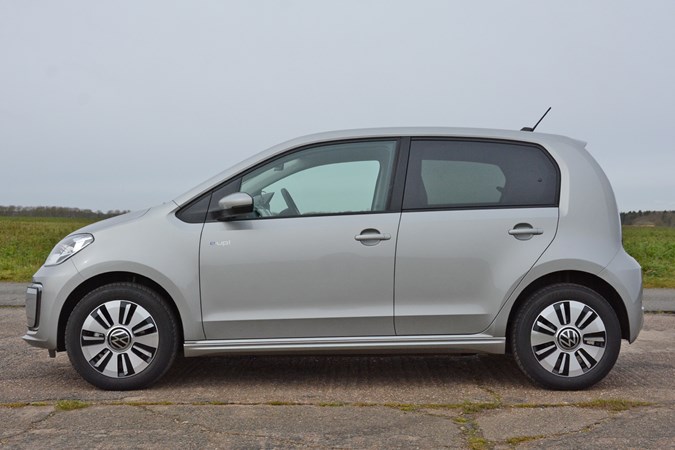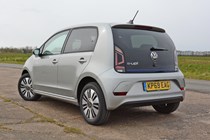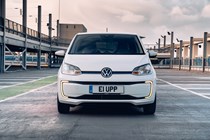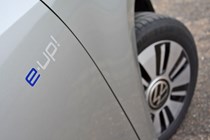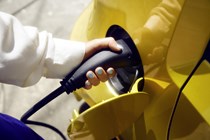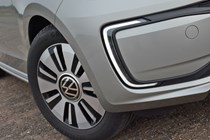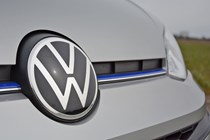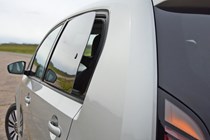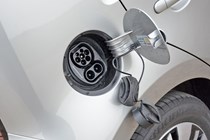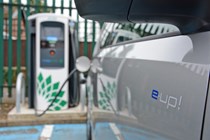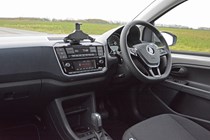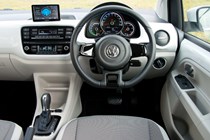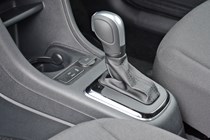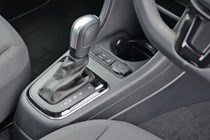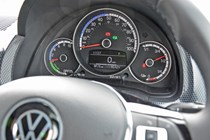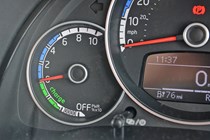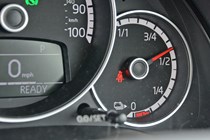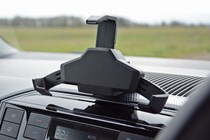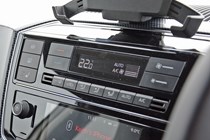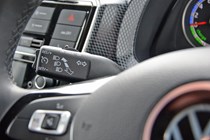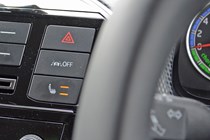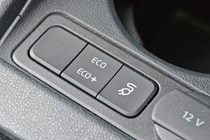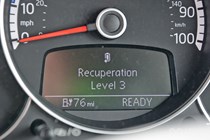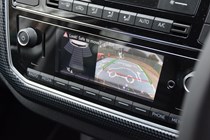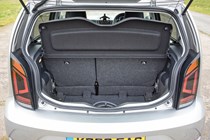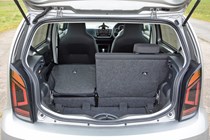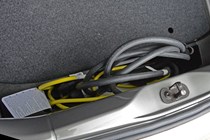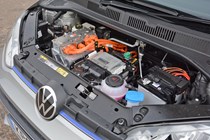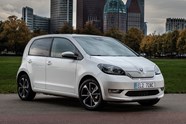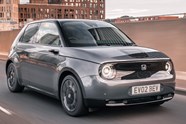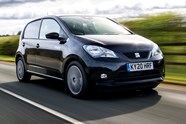
Volkswagen e-Up Hatchback review
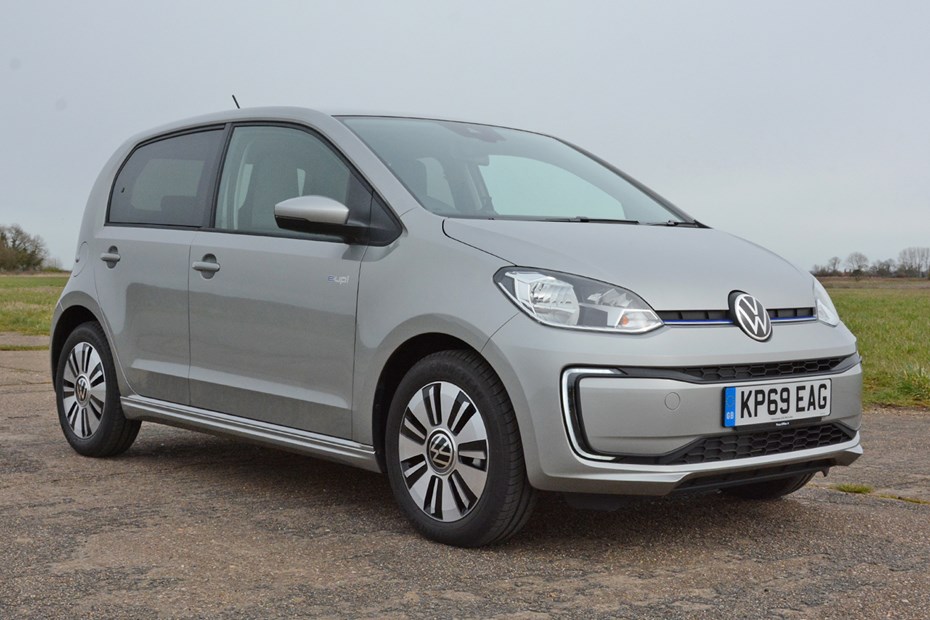
At a glance
| Price new | £23,650 - £25,105 |
|---|---|
| Used prices | £3,167 - £9,558 |
| Road tax cost | £0 |
| Insurance group | 10 |
Get an insurance quote with

|
|
| Fuel economy | 4.3 - 5.3 miles/kWh |
| Range | 160.9 miles |
| Miles per pound | 6.8 - 15.6 |
| View full specs for a specific version | |
Available fuel types
Fully electric
Pros & cons
- Genuinely usable electric range
- Practical, functional interior
- An absolute doddle to drive
- List price looks expensive
- Practicality limited by four seats
- Not the best EV on longer journeys
Volkswagen e-Up Hatchback (14-22) rivals
Overview
Despite their inherent fitness for purpose, fully electric city cars, such as the Volkswagen e-Up, are something of a rarity – or at least they are for now.
While there’s a tangible rightness about cars destined to spend much of their working lives in towns and cities being emission-free, they remain exensive to produce and consequently have high purchase prices compared with petrol-engined equivalents. But, factor in the potential savings you’ll make recharging the battery compared with reflling a fuel tank, and the overall cost of ownership makes them much more financially accessible.
Minor tweaks and bigger battery for 2020
As with the petrol-engined Volkswagen Up range, the e-Up received a smattering of revisions for 2020, although visually litte has changed. You’d need to be a dedicated VW afficianado to recognise that the latest Ups were the first models sold in the UK with the new corporate logo on the nose and tail.
>> Search for electric leasing deals
>> 12 of the Best affordable and cheapest Electric Cars of 2021
Visual differences between the electric version and those fitted with internal combustion engines include blue detail stripes front and rear, a different front bumper design, aerodynamic disc-like alloy wheels and C-shaped daytime-running lights in the front bumper rather than the headlamp units.
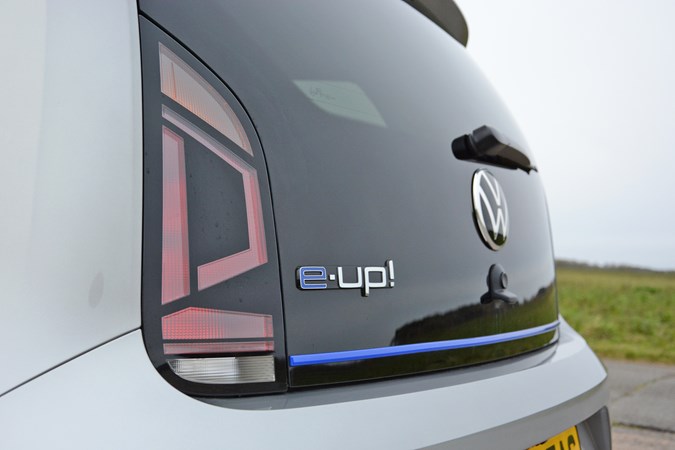
What’s of greater importance is the upgraded battery pack that’s replaced the one the e-Up has had since its launch. In real terms it’s over 70% larger in capacity than it was before, growing from 18.7kWh to 32.3kWh, which increases its theoretical range on a full change from a paltry 99 miles to a far more impresive 159 miles. More than enough for city-centric hatchback.
This longer-range battery pack made its debut in the very closely related SEAT Mii Electric and Skoda Citigo-e, but the e-Up’s in-house rivals are now electric-only, making the Volkswagen version your sole choice if you still crave perol power.
Nevertheless, while the basic cars are identical, the detail differences make the e-Up the plusher – and most expensive – of the trio.
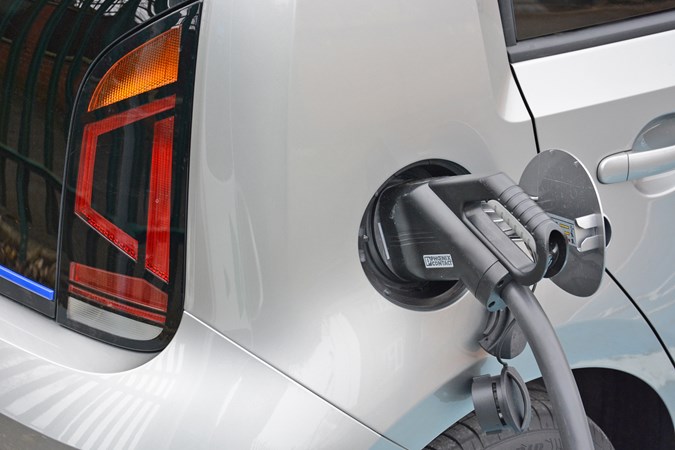
Charging is also a quicker progress with the latest e-Up: Volkswagen says that when plugged into a charger capable of delivering more than 40kW (the maximum rate it can accept), the e-Up can reach 80% charged from near-flat in an hour. A 7.2kW domestic wall box will see a full charge take just over four hours.
Also improved is performance, with the e-Up’s 0-62mph time improving by a second to 11.9. Power is provided by an 82hp electric motor, driving the front wheels via a single-speed automatic gearbox.
Practical interior remains largely unchanged
The e-Up retains the same bodywork and interior fittings as the standard Up city car. This is, by-and-large, a good thing – even eight years on from its debut, it remains one of the very best city car interiors. Usefully, tts boxy body allows for genuine space inside for four adults, while the deep boot gives a surprising amount of room for luggage, although you’ll have to store suitcases vertically.
As befitting its lofty price tag, the e-Up’s specification levels are high incorporating dual-zone climate control, heated seats and a bespoke smartphone dock, plus a companion ‘Maps&More’ app. Through this, owners can not only operate the sat-nav and infotainment, but remotely check state of charge or pre-condition the air-conditioning, cooling the car down or heating it up as desired while it’s still charging.
Still be fun to drive
Though the previous model of e-Up had its flaws, it was good fun to drive. The instant response and great low-down power endowed by the electric motor meant it was easy to extract the fun factor from and the latest version merely adds to that.
Its primary downside is that if fun in a tiny VW is your primary objective, then be aware that the 115hp Up GTI weighs in some £4,000 less expensive after the government’s £3,000 Plug-in Car Grant has been deducted.
However, for most people that won’t be the main reason for purchasing the electric Up. Is it so much better than its SEAT and Skoda cousins to justify the elevated price tag or does it make more sense to plump for a slightly larger battery electric (BEV) small car such as the Honda e, MINI Electric Hatch or overhauled Renault Zoe?
Continue reading Parkers’ expert Volkswagen e-Up review to find out.
